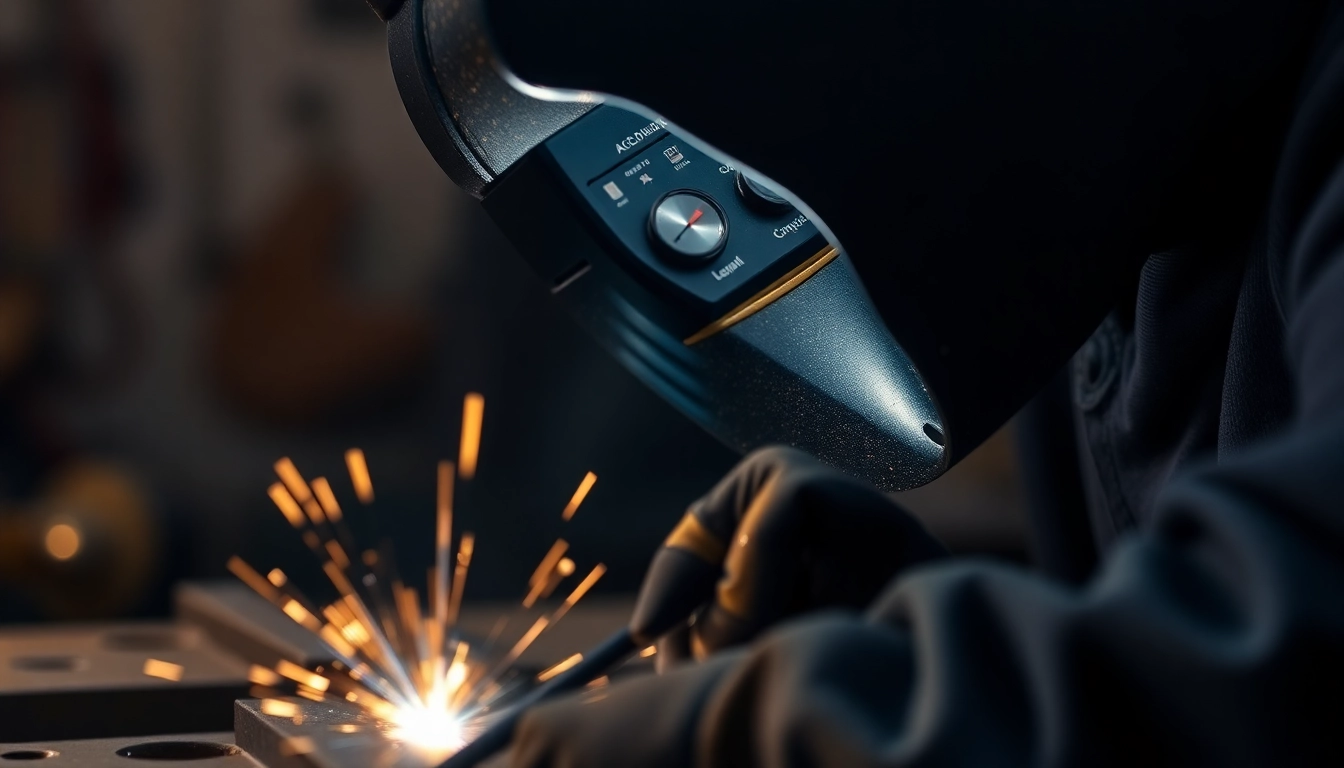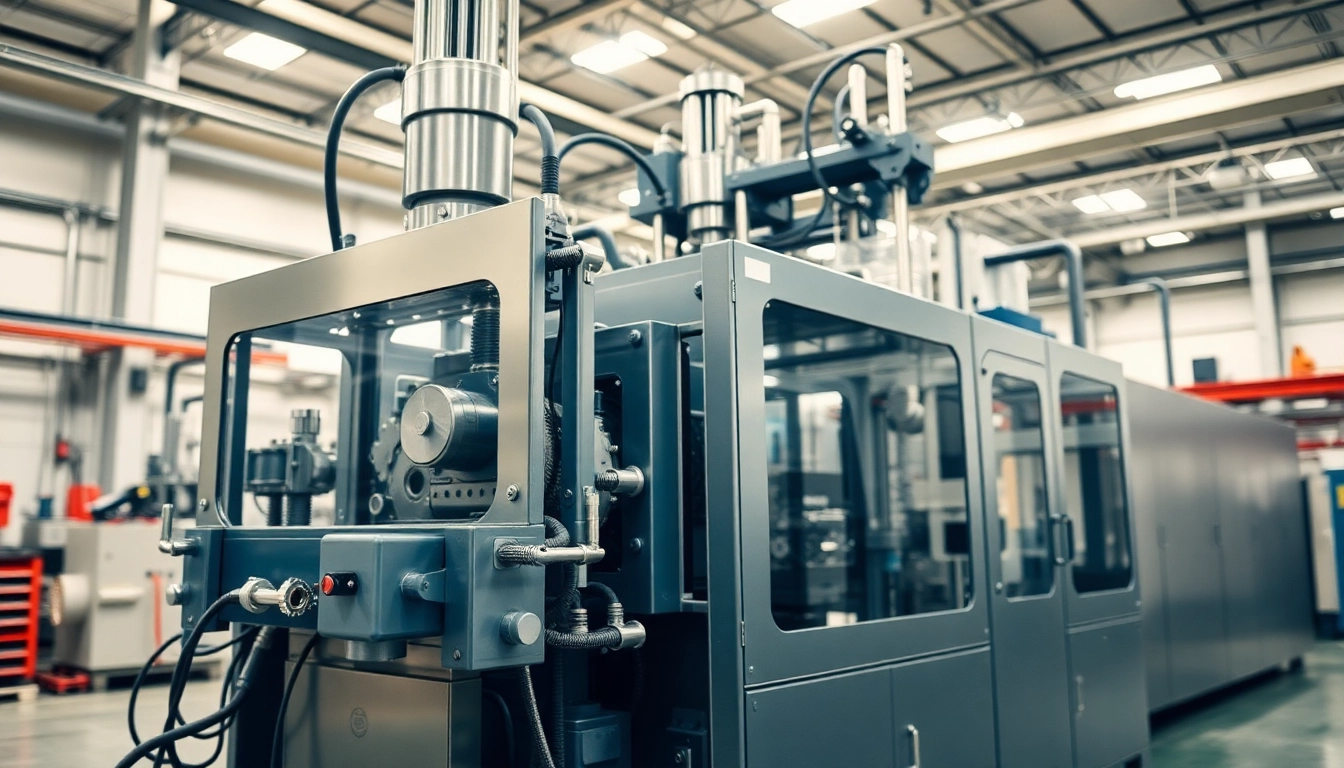Understanding AC DC TIG Welders
In the world of welding, ac dc tig welder stands out as a versatile tool, capable of handling a wide array of welding projects with precision and finesse. Whether you’re a seasoned professional or a hobbyist, understanding the fundamentals of AC DC TIG welders can significantly enhance your welding experience.
What is an AC DC TIG Welder?
An AC DC TIG (Tungsten Inert Gas) welder is a specialized welding machine that provides the ability to weld materials using both alternating current (AC) and direct current (DC). This dual functionality makes AC DC TIG welders particularly desirable for a variety of applications. AC welding is ideal for non-ferrous metals like aluminum and magnesium, as it helps eliminate surface oxides and allows for clean welds. Conversely, DC is more suitable for ferrous metals like steel and stainless steel, providing deeper penetration and a smooth finish.
The Advantages of AC DC TIG Welding
The versatility of an AC DC TIG welder comes with several advantages:
- Versatility: The ability to switch between AC and DC allows welders to work with a broader range of materials.
- Precision: TIG welding is known for its precise control, making it suitable for intricate designs and thin materials.
- Clean Welds: TIG welding produces cleaner welds with minimal spatter, which reduces post-weld cleanup efforts.
- Less Heat Input: TIG welding minimizes thermally induced distortions, particularly crucial when working on sensitive projects.
Common Applications in Various Industries
AC DC TIG welders are widely used across multiple industries due to their adaptability. Common applications include:
- Aerospace: Ensuring high standards in material integrity and precision.
- Automotive: Creating strong and durable welds for critical components.
- Fabrication: Ideal for metal fabricators who need to join various types of metals.
- Medical Equipment: Used for constructing medical devices that require cleanliness and precision.
Key Features to Look For
When selecting an AC DC TIG welder, there are several important features to consider to ensure you choose a machine that meets your needs.
Power and Duty Cycle Considerations
Power output and duty cycle are critical factors to examine. Power output, measured in amps, dictates the thickness of materials you can successfully weld. Most AC DC TIG welders range from 200 to 300 amps, which is ample for most applications. The duty cycle represents how long a welder can operate before needing to cool down; for example, a 60% duty cycle means the welder can operate for 6 minutes out of a 10-minute cycle at a given output. Higher duty cycles are essential for larger projects.
Portability and Size Options
Depending on whether you need a welder for home use or industrial applications, portability may be an essential factor. Smaller, lighter welders are ideal for personal use or jobs on the move, while larger machines tend to offer more power and features at the cost of mobility. Consider models with built-in handles or wheels for easier transport.
Control Features and Technology
Modern AC DC TIG welders include a variety of control features that enhance efficiency and usability. Digital settings for amperage, pulse frequency, and gas flow can make achieving consistent results easier. Advanced models might also come with features such as foot pedals for adjusting the current on the fly, which can improve control during welding.
Top AC DC TIG Welding Brands
The market is filled with numerous brands offering AC DC TIG welders. Researching the leading manufacturers is vital for quality assurance.
Comparison of Popular Models
Some of the most reputable brands in the industry include:
- Miller Electric: Known for high-quality and reliable welders, their Dynasty® 210 is a favorite.
- Linncoln Electric: Their Square Wave® TIG 200 is ideal for beginners due to its user-friendly interface.
- Everlast: Offering good performance at competitive prices, their AC/DC models are solid choices for both hobbyists and professionals.
Customer Reviews and Feedback
Reviews can provide insight into the real-world performance of AC DC TIG welders. Customers often praise specific features such as ease of use, performance consistency, and durability. Additionally, brands like PrimeWeld and YesWelder receive acclaim for their customer service and warranty support, making them preferred choices among welders.
Best Value for Money Options
For those on a budget, several value-for-money options exist. The Eastwood AC/DC TIG 200, for under $1000, is recommended for its balance of quality and affordability. PrimeWeld also offers solid machines at reasonable prices, ideal for those starting.
Techniques for Efficient TIG Welding
Knowing the technical aspects of using an AC DC TIG welder is essential for effective welding.
Setting Up Your AC DC TIG Welder
Preparation is crucial. Start by connecting the gas supply and ensuring the correct type of tungsten electrode is positioned in the torch. Set your machine based on the thickness and type of material you’re working on; typically, DC is suited for steels, while AC functions better for aluminum. Gas flow rates should also be adjusted properly to ensure adequate shielding.
Essential Welding Techniques Explained
Controlling the arc is fundamental in TIG welding. Techniques include:
- Manipulating the Torch: Hold the torch at a consistent angle (usually about 10-15 degrees) and maintain a steady speed.
- Filler Rod Introduction: Introduce filler rod into the molten pool without disrupting the arc stability.
- Pulsing Technique: Using a pulse feature can help manage heat, particularly when working on thin materials.
Safeguarding Against Common Mistakes
Common pitfalls include insufficient prep work, incorrect settings, and using an incompatible filler material. Always double-check settings against material specifications and ensure your workspace is clean to reduce contamination risks.
Maintaining Your AC DC TIG Welder
Proper maintenance of your AC DC TIG welder is crucial for longevity and optimal performance.
Regular Maintenance Best Practices
Regularly inspect and clean your welder, ensuring that the components such as the torch, ground clamp, and gas lines are free of debris. Replace worn tungsten electrodes and check for gas leaks. Routine checks can significantly prolong the machine’s lifespan.
Common Issues and Troubleshooting Tips
If you encounter issues such as a weak arc or erratic behavior, common troubleshooting tips include:
- Check the gas supply for proper flow and leaks.
- Inspect the electrode and tungsten for wear and degradation.
- Review power settings to ensure compatibility with the material you are welding.
When to Seek Professional Help
While many issues can be resolved through basic troubleshooting, some situations require professional assistance—especially if electrical components are involved or if the machine is under warranty. Regularly scheduled professional service is recommended for maintaining optimal performance.



